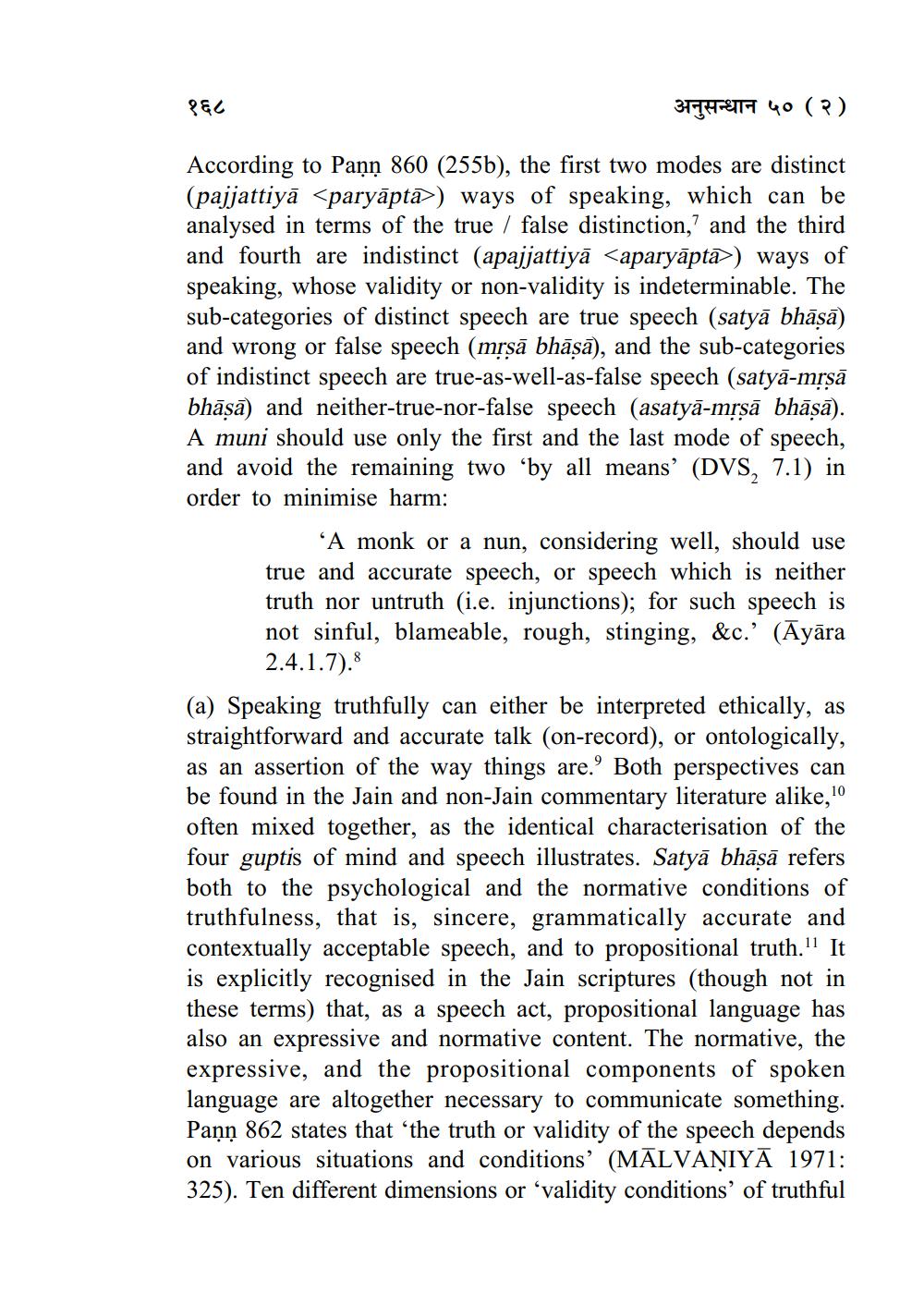Book Title: Truthfullness and Truth in Jaina Philosophy Author(s): Peter Flugel Publisher: ZZ_Anusandhan View full book textPage 3
________________ १६८ अनुसन्धान ५० (२) According to Pann 860 (255b), the first two modes are distinct (pajjattiyā <paryāpta) ways of speaking, which can be analysed in terms of the true / false distinction, and the third and fourth are indistinct (apajjattiyā <aparyāpta>) ways of speaking, whose validity or non-validity is indeterminable. The sub-categories of distinct speech are true speech (satyā bhāsā) and wrong or false speech (mrsa bhāsa), and the sub-categories of indistinct speech are true-as-well-as-false speech (satyā-mrsā bhāsā) and neither-true-nor-false speech (asatyā-mssā bhāsā). A muni should use only the first and the last mode of speech, and avoid the remaining two by all means' (DVS, 7.1) in order to minimise harm: A monk or a nun, considering well, should use true and accurate speech, or speech which is neither truth nor untruth (i.e. injunctions); for such speech is not sinful, blameable, rough, stinging, &c.' (Āyāra 2.4.1.7). (a) Speaking truthfully can either be interpreted ethically, as straightforward and accurate talk (on-record), or ontologically, as an assertion of the way things are. Both perspectives can be found in the Jain and non-Jain commentary literature alike, 10 often mixed together, as the identical characterisation of the four guptis of mind and speech illustrates. Satyā bhāṣā refers both to the psychological and the normative conditions of truthfulness, that is, sincere, grammatically accurate and contextually acceptable speech, and to propositional truth." It is explicitly recognised in the Jain scriptures (though not in these terms) that, as a speech act, propositional language has also an expressive and normative content. The normative, the expressive, and the propositional components of spoken language are altogether necessary to communicate something. Pann 862 states that 'the truth or validity of the speech depends on various situations and conditions’ (MĀLVAŅIYĀ 1971: 325). Ten different dimensions or 'validity conditions of truthfulPage Navigation
1 2 3 4 5 6 7 8 9 10 11 12 13 14 15 16 17 18 19 20 21 22 23 24 25 26 27 28 29 30 31 32 ... 53
